Most downloaded
- Page Path
-
- HOME
- BROWSE ARTICLES
- Most downloaded
"Most downloaded" Articles are from the articles published in 2023 during the last six months.
- Original Article
- Neonatology (Perinatology)
- Mortality of very low birth weight infants by neonatal intensive care unit workload and regional group status (27 times)
- Sung-Hoon Chung, Chae Young Kim, Yong-Sung Choi, Myung Hee Lee, Jae Woo Lim, Byong Sop Lee, Ki-Soo Kim; the Korean Neonatal Network
- Clin Exp Pediatr. 2024;67(11):619-627. Published online September 12, 2024
-

Question: How do structural and staffing characteristics of neonatal intensive care units (NICUs) influence the mortality rates of very low birth weight infants (VLBWIs)?
Findings: NICUs with higher staffing levels, particularly with more neonatologists, and those offering advanced care levels were associated with lower mortality rates. Additionally, regional disparities were observed, with some areas demon-strating significantly higher survival rates.
Meaning: Adequate staffing and equitable regional distribution of medical resources are crucial for improving survival outcomes in VLBWIs. Efforts to enhance NICU staffing and address regional healthcare disparities are essential for optimizing care quality and reducing mortality in this vulnerable population.
- Clinical Note
- Immunology
- Comparative analysis of rare periodic fever syndromes including the first Korean case of hyperimmunoglobulinemia D and periodic fever syndrome (27 times)
- Yoonsun Yoon, Hyun Seo Kim, Jung Ok Shim, JungHwa Lee
- Clin Exp Pediatr. 2024;67(10):550-552. Published online September 24, 2024
-
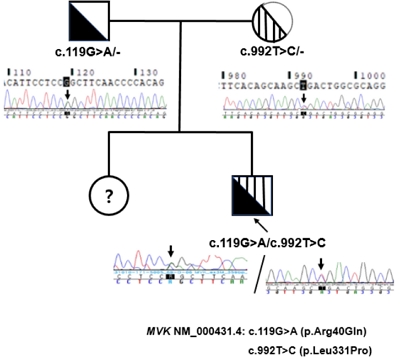
- Original Article
- Neurobehavior
- Association between previous abortion history and risk of autism spectrum disorders among offspring: a meta-analysis (25 times)
- Ensiyeh Jenabi, Erfan Ayubi, Saeid Bashirian, Mahdieh Seyedi, Mohammad Rezaei
- Clin Exp Pediatr. 2023;66(2):70-75. Published online August 17, 2022
-
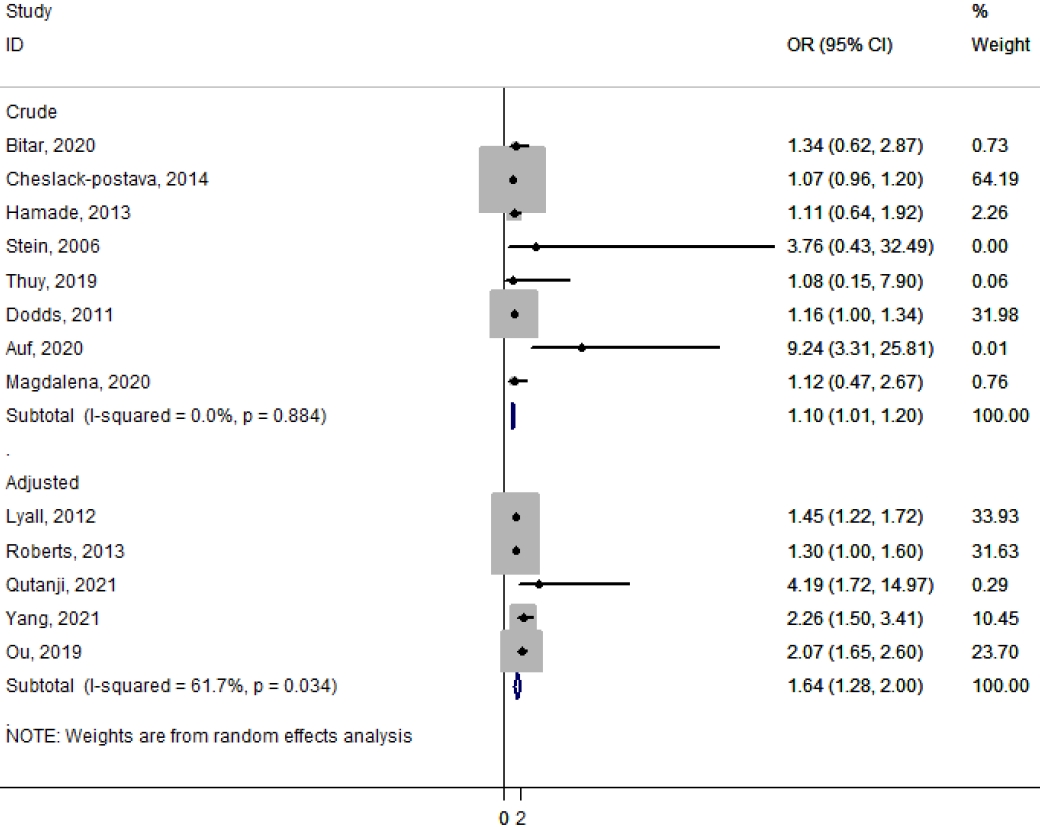
Question: This study aimed to determine whether there is an association between previous abortion history and the risk of autism spectrum disorders (ASDs) among children.
Finding: We found that the risk of ASD associated with previous abortion history had an odds ratio of 1.64 (95% confidence interval, 1.28–2.0; I2=61.7%).
Meaning: These findings suggest a positive and significant association between history of previous abortion and risk of ASD in children.
- Neonatology (Perinatology)
- Efficacy of body position on gastric residual in preterm infant: a systematic review and meta-analysis (25 times)
- Kurvatteppa Halemani, Alwin Issac, Sanjay Dhiraaj, Prabhaker Mishra
- Clin Exp Pediatr. 2023;66(6):262-270. Published online November 30, 2022
-
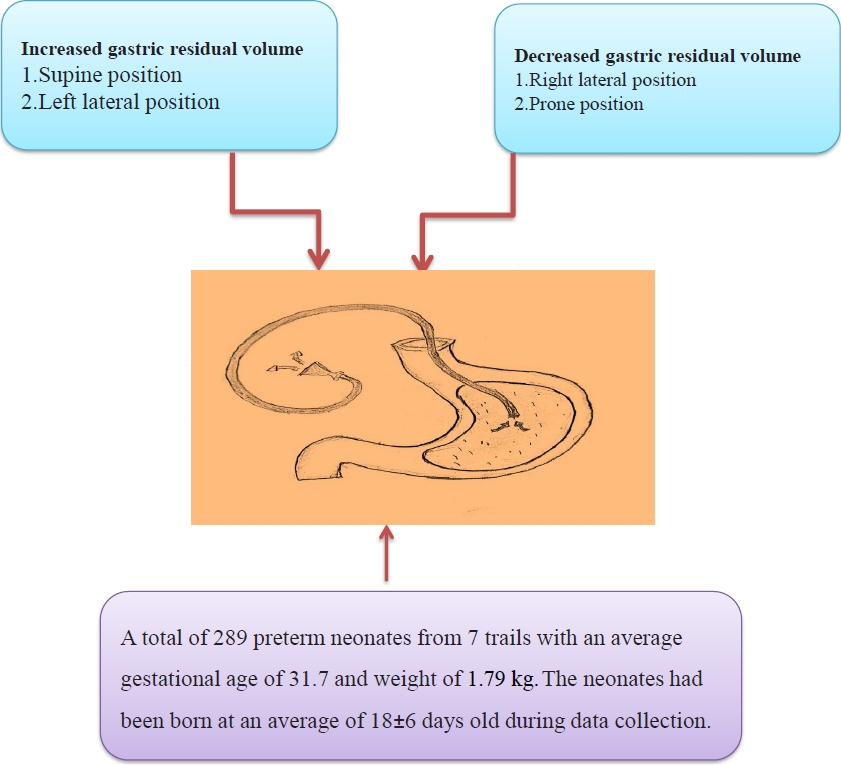
Breastfeeding and it's tolerance are the positive indicators for preterm babies. Placing the preterm infant in the right lateral or prone position after feed had lesser gastric residual volume compared to placing them in left lateral or supine positions. The post-feed position is a vital element in enhancing feeding tolerance, mechanical functions of the gastrointestinal tract and the overall development of preterm infants.
- Editorial
- Pulmonology
- Wheezing in infants and preschoolers: phenotypes and treatment options (25 times)
- Jung Yeon Shim
- Clin Exp Pediatr. 2023;66(1):26-27. Published online December 6, 2022
-
· Knowing who will develop into asthma or who will not is important to impose proper treatment and early intervention in a child with the first episode of wheezing.
· Phenotypes of severe bronchiolitis in less than 2-year-old children with first episode of wheezing were suggested for different treatment options
· RV-induced and/or atopy-associated severe wheezing in preschool children may benefit from early intervention of asthma treatment.
- Review Article
- Immunology
- Systemic autoinflammatory disorders (25 times)
- Dae Chul Jeong
- Clin Exp Pediatr. 2023;66(10):432-438. Published online June 14, 2023
-

· Systemic autoinflammatory disorders (SAID) are disorders caused by dysregulation of the innate immunity with genetic background, leading to recurrent episodes of systemic inflammation.
· SAID is characterized by recurrent acute inflammatory responses including fever or skin manifestations, unrelated with infection or malignancy.
· Diagnosis is based on family and long-term history with detailed clinical and laboratory manifestations during febrile periods.
- Original Article
- Neonatology (Perinatology)
- Effect of vitamin E supplementation on bilirubin levels in infants with hyperbilirubinemia: a double-blind randomized clinical trial (25 times)
- Mojtaba Cheraghi, Maziar Nikouei, Majid Mansouri, Siros Hemmatpour, Yousef Moradi
- Clin Exp Pediatr. 2024;67(5):249-256. Published online March 26, 2024
-

Question: Is vitamin E a viable therapeutic option for managing neonatal hyperbilirubinemia?
Finding: This randomized clinical trial examined the effects of oral vitamin E supplementation on bilirubin reduction (primary outcome), phototherapy duration, and length of hospital stay (secondary outcome) in 138 infants.
Meaning: Infants administered vitamin E versus placebo demonstrated similar reductions in bilirubin levels and length of hospital stay.
- Letter to the Editor
- Hematology
- Neutropenia following metamizole use in pediatric patients: a multicenter retrospective study (25 times)
- Meraj Alam Siddiqui, Arzu Akyay, Fatma Burcu Belen Apak, Özgür Carti, Canan Albayrak, Melek İşik, Zühre Kaya, Sevgi Yetgin, Lale Olcay
- Clin Exp Pediatr. 2024;67(8):415-417. Published online July 23, 2024
-

- Review Article
- Rheumatology
- Double-negative T cells in pediatric rheumatic diseases (25 times)
- Dimitri Poddighe, Tilektes Maulenkul, Kuanysh Dossybayeva, Gulsamal Zhubanova, Zaure Mukusheva, Lyudmila Akhmaltdinova
- Clin Exp Pediatr. 2024;67(12):632-640. Published online September 12, 2024
-

Double-negative T (DNT) cells appear to be increased in several pediatric rheumatic diseases and this finding may be correlated with disease activity to some extent. However, due to significant heterogeneity in several methodological aspects, further investigations in rheumatic children are needed to assess the potential relevance of DNT cells as biomarkers and clarify their immunopathological role.
- Original Article
- Gastroenterology
- Somatic symptom severity during acute illnesses among children with functional gastrointestinal disorders (25 times)
- Rattanachart Sirinil, Anundorn Wongteerasut
- Clin Exp Pediatr. 2025;68(8):587-593. Published online March 11, 2025
-
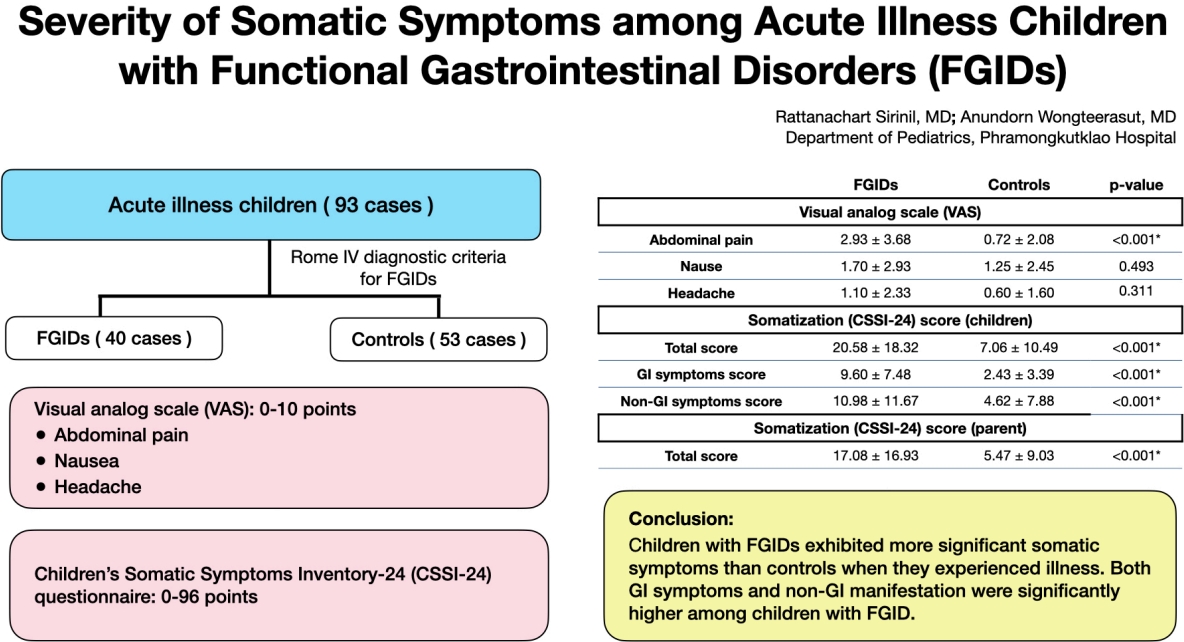
Functional gastrointestinal disorders (FGIDs) are associated with various somatic symptoms measured using a visual analogue scale and the Children’s Somatic Symptoms Inventory-24 questionnaire. Children with FGIDs exhibited more significant somatic symptoms than controls during acute illnesses. Gastrointestinal (GI) and non-GI manifestations are significantly more common in children with FGIDs.
- Review Article
- Allergy
- Recent topics on gastrointestinal allergic disorders (24 times)
- Yoshiyuki Yamada
- Clin Exp Pediatr. 2023;66(6):240-249. Published online January 9, 2023
-
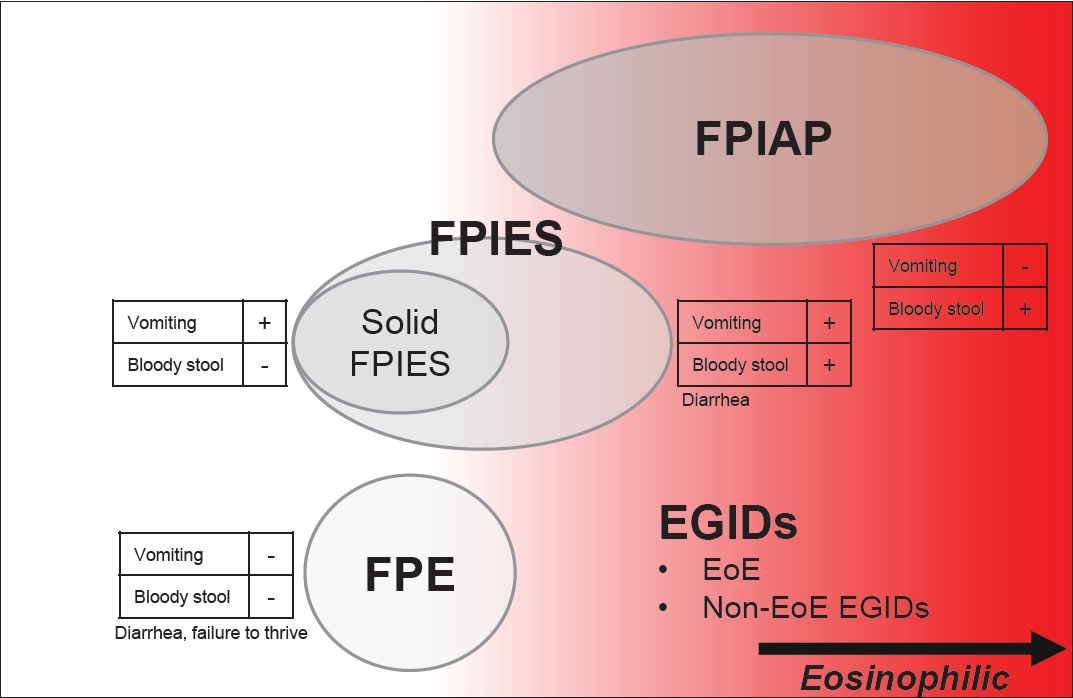
Gastrointestinal (GI) allergies are divided into immunoglobulin E (IgE)-mediated, non-IgE-mediated, and mixed types. In addition to non-IgE-mediated, overlapping eosinophilic GI disorders (EGIDs) have increased in Japan. EGIDs, a mixed-type allergy category, include eosinophilic esophagitis (EoE) and non-EoE EGIDs. The number of EoE cases has increased in Western countries, followed by Asian countries. Recent GI allergies may also be associated with type 2 inflammation.
- Editorial
- Nephrology (Genitourinary)
- Optimal hemodialysis treatment for pediatric kidney failure patients (24 times)
- Yo Han Ahn
- Clin Exp Pediatr. 2023;66(3):125-126. Published online February 15, 2023
-
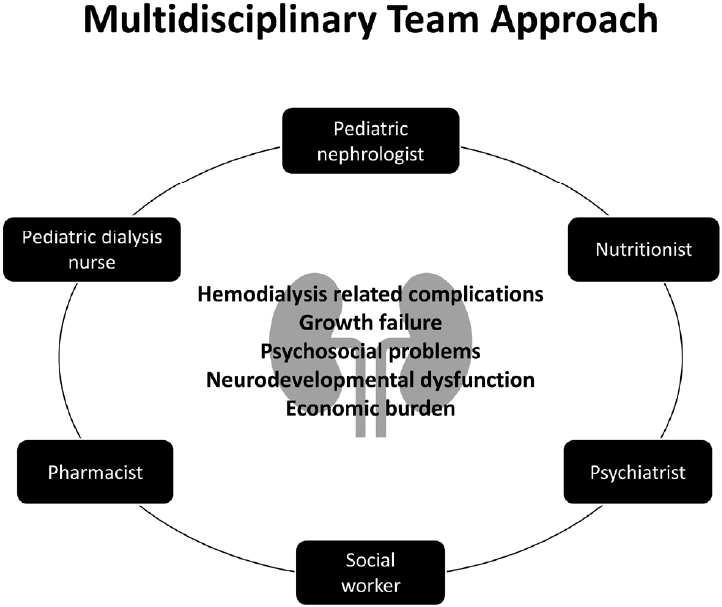
· Although the basic concept of hemodialysis (HD) is similar in adults and children, specific factors must be considered in the latter, including the small dialyzer and circuit, difficult vascular access, and frequent complications.
· HD-associated complications include catheter-related problems, hemodynamic instability, and neurodevelopmental and cognitive dysfunction.
· Pediatric HD is challenging, and steady efforts are needed to perform it safely and reduce its complications, thereby improving clinical outcomes.
- Original Article
- General Pediatrics
- Virtual reality for pain reduction during intravenous injection in pediatrics: a systematic review and meta-analysis of controlled clinical trials (24 times)
- Ensiyeh Jenabi, Saeid Bashirian, Amir Mohammad Salehi, Masoud Rafiee, Mozhdeh Bashirian
- Clin Exp Pediatr. 2023;66(12):533-537. Published online June 14, 2023
-

Question: This is the first meta-analysis to examine published evidence of the effectiveness of virtual reality at reducing pain during pediatric intravenous injections.
Finding: Our results suggest that virtual reality effectively reduces pain associated with intravenous injections in pediatric patients.
Meaning: These findings suggest the importance of virtual reality in decreasing the pain of intravenous injections among children.
- Pulmonology
- Oligohydramnios affects pulmonary functional/structural abnormalities in school-aged children with bronchopulmonary dysplasia (24 times)
- Jeong Eun Shin, Soon Min Lee, Mi-Jung Lee, Jungho Han, Joohee Lim, Haerin Jang, Ho Seon Eun, Min Soo Park, Soo Yeon Kim, Myung Hyun Sohn, Ji Ye Jung, Kyung Won Kim
- Clin Exp Pediatr. 2024;67(5):257-266. Published online April 16, 2024
-
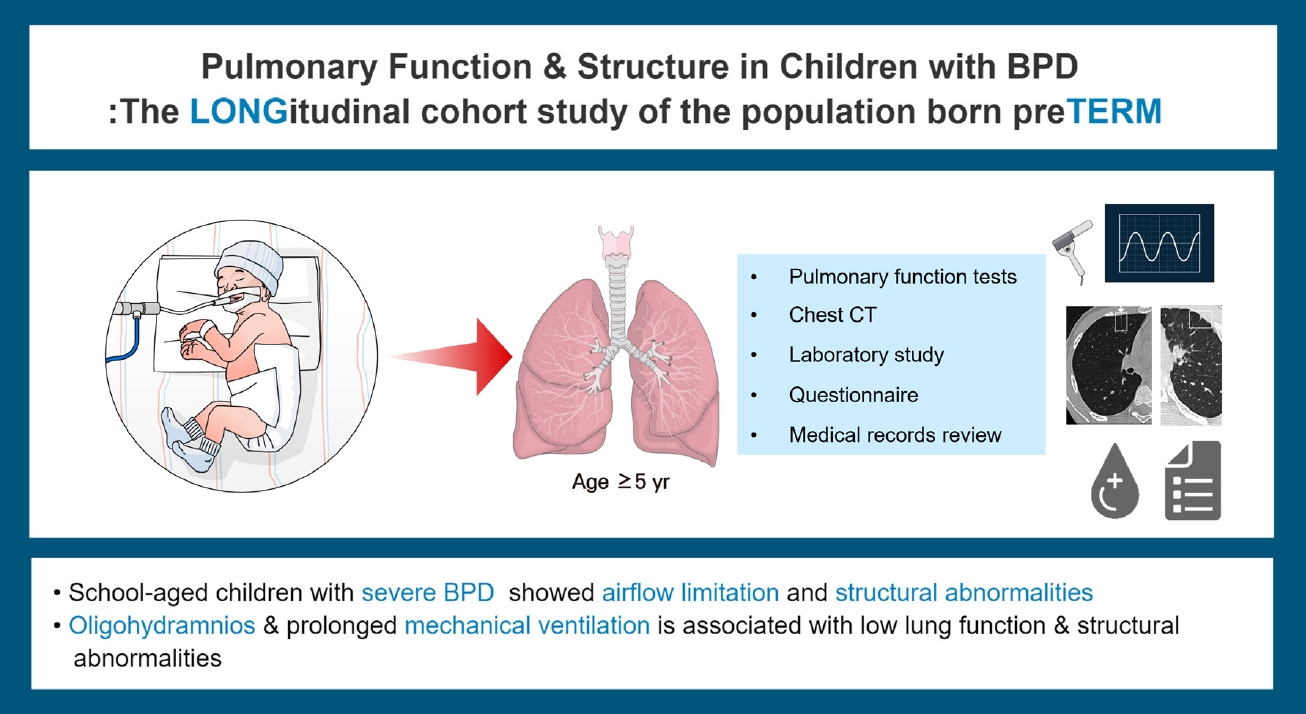
Question: Is bronchopulmonary dysplasia (BPD) associated with functional/structural abnormalities later in life?
Finding: School-aged children with severe BPD had abnormalities on pulmonary function tests and lung computed tomography despite no subjective respiratory symptoms; however, only prenatal oligohydramnios and prolonged ventilator use were associated with abnormal lung function.
Meaning: Long-term monitoring of preterm infants’ lung health is essential, especially for those with prenatal oligohydramnios or prolonged ventilator use.
- Review Article
- Developmental and Behavioral Medicine
- Effect of pesticide exposure on stunting incidence: a systematic review and meta-analysis (24 times)
- Sani Rachman Soleman, Yaltafit Abror Jeem, Muhammad Fathi Banna Al Faruqi, Mahdea Kasyiva, Vita Widyasari, Kuswati Kuswati, Nur Aini Djunet, Muflihah Rizkawati, Ety Sari Handayani
- Clin Exp Pediatr. 2024;67(10):510-518. Published online September 24, 2024
-

This review aimed to determine whether pesticide exposure is associated with stunting in children. The 13 included studies agree that pesticide exposure is not correlated with stunting incidence regardless of substance type (organophosphate and pyrethroid). Heterogeneity appeared with age covariate as potential confounding. The evidence of this study is challeng-ing, as the adverse effects of pesticides grossly occurred. The protection of children is warranted for preventing future neurodevelopment issues.
- Original Article
- Infection
- Clinical, biochemical, and genetic study of TACE/TNF-α/ACE signaling pathway in pediatric COVID-19 infection (24 times)
- Ahmed El-Abd Ahmed, Sawsan M.A. Abuhamdah, Mohammed H. Hassan, Nagwan I. Rashwan, Eman A. Abd-Elmawgood, Haggagy Mansour, Hoda S. Sherkawy, Shymaa G. Rizk
- Clin Exp Pediatr. 2024;67(12):704-717. Published online November 27, 2024
-

Question: Is the tumor necrosis factor (TNF) signaling pathway (TNF-α-converting enzyme [TACE]/TNF-α/angiotensin converting enzyme [ACE]) involved in pediatric coronavirus disease 2019 (COVID-19) infection?
Finding: Significantly increased circulating TACE/TNF-α and decreased ACE2 levels were noted. TNF-α-308G/A plays a significant role in susceptibility to COVID-19 infection among children. The ACE (I/D) (rs4646994) and ACE2 (rs2285666) single nucleotide polymorphisms lack significant associations with pediatric COVID-19 infection.
Meaning: The TNF signaling pathway participates in pediatric COVID-19 infection.
- Nutrition
- Not breastfeeding and risk of autism spectrum disorders among children: a meta-analysis (23 times)
- Ensiyeh Jenabi, Saeid Bashirian, Amir Mohammad Salehi, Salman Khazaei
- Clin Exp Pediatr. 2023;66(1):28-31. Published online July 19, 2022
-
This study aimed to determine whether there is an association between not breastfeeding (versus breastfeeding) and the risk of autism spectrum disorders (ASD) among children. We found that the risk of ASD associated with not breastfeeding had an odds ratio of 1.81 (95% confidence interval, 1.35–2.27; I2=0 %). These findings suggest the importance of breastfeeding in decreasing the risk of ASD among children.
- Endocrinology
- Kisspeptin and DLK1 levels for monitoring treatment of girls with central precocious puberty (23 times)
- Witchuwan Onsoi, Nattakarn Numsriskulrat, Suphab Aroonparkmongkol, Vichit Supornsilchai, Khomsak Srilanchakon
- Clin Exp Pediatr. 2024;67(6):296-302. Published online May 21, 2024
-

Questions: Can the serum levels of kisspeptin and DLK1 be potential biomarkers for monitoring the treatments for central precocious puberty (CPP)?
Findings: There were no significant differences in the baseline serum kisspeptin and DLK1 levels in CPP girls compared to girls with premature thelarche (PT). After 6 months of GnRH analogue treatment in CPP girls, median serum kisspeptin levels decreased, while median serum DLK1 levels increased compared to baseline.
Meanings: Serum levels of kisspeptin and DLK1 may serve as novel biomarkers for monitoring the efficacy of treatments for CPP.
- Review Article
- Cardiology
- Research trends on causes of Kawasaki disease in the COVID-19 era: focus on viral infections (22 times)
- Young Hwan Lee
- Clin Exp Pediatr. 2023;66(1):1-11. Published online June 22, 2022
-

· The etiology of Kawasaki disease (KD) is unclear, but its clinical, epidemiological, and pathophysiological characteristics are strongly associated with infectious diseases.
· In the coronavirus disease 2019 pandemic era, viruses are attracting the most attention. Sudden acute respiratory syndrome coronavirus 2 infection causes various hyperinflammation in children that require differentiation from KD.
· Immune responses in patients with KD may be induced by host cell damage. To effectively prevent and treat KD, the genetic background and immune responses of KD patients and triggering pathogens require identification.
- Original Article
- Neurology
- Long-term neurological cognitive, behavioral, functional, and quality of life outcomes after fetal myelomeningocele closure: a systematic review (22 times)
- Andre Marolop Pangihutan Siahaan, Martin Susanto, Sarma Nursani Lumbanraja, Dwi Herawati Ritonga
- Clin Exp Pediatr. 2023;66(1):38-45. Published online November 30, 2022
-
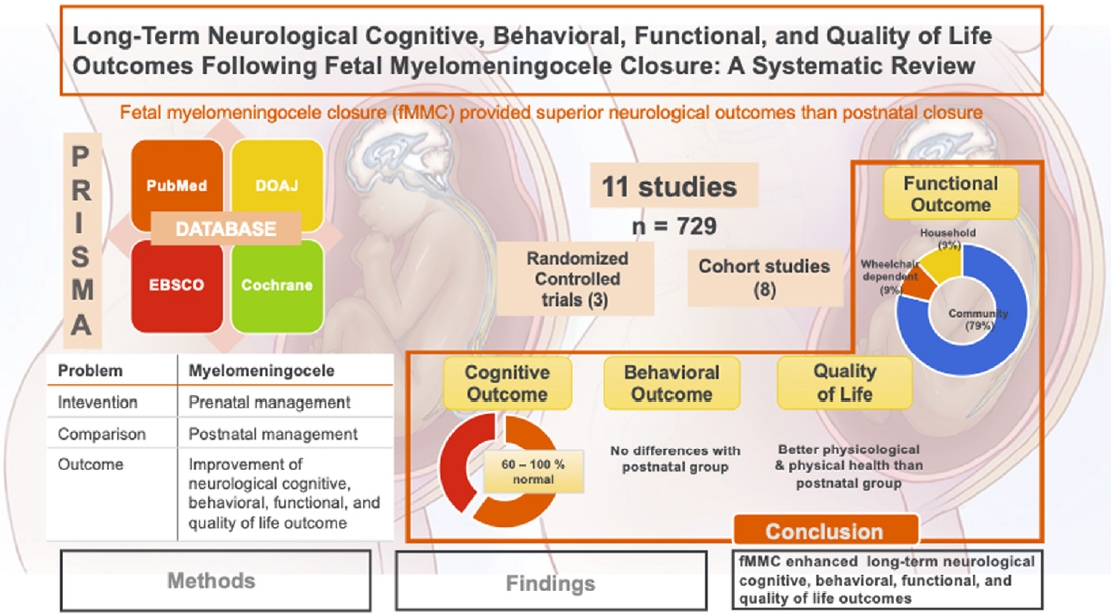
· Fetal myelomeningocele closure significantly improved long-term neurological cognitive, behavioral, functional, and quality of life outcomes, most likely by reducing hydrocephalus rates.
· However, fetal myelomeningocele closure is associated with a significant risk of pregnancy complications, especially premature rupture of membranes and preterm delivery.
- Neonatology (Perinatology)
- A thickened formula reduces feeding-associated oxygen desaturation and bradycardia in preterm infants (22 times)
- Gayoung Lee, Juyoung Lee, Ga Won Jeon, Yong Hoon Jun
- Clin Exp Pediatr. 2023;66(1):32-37. Published online December 15, 2022
-
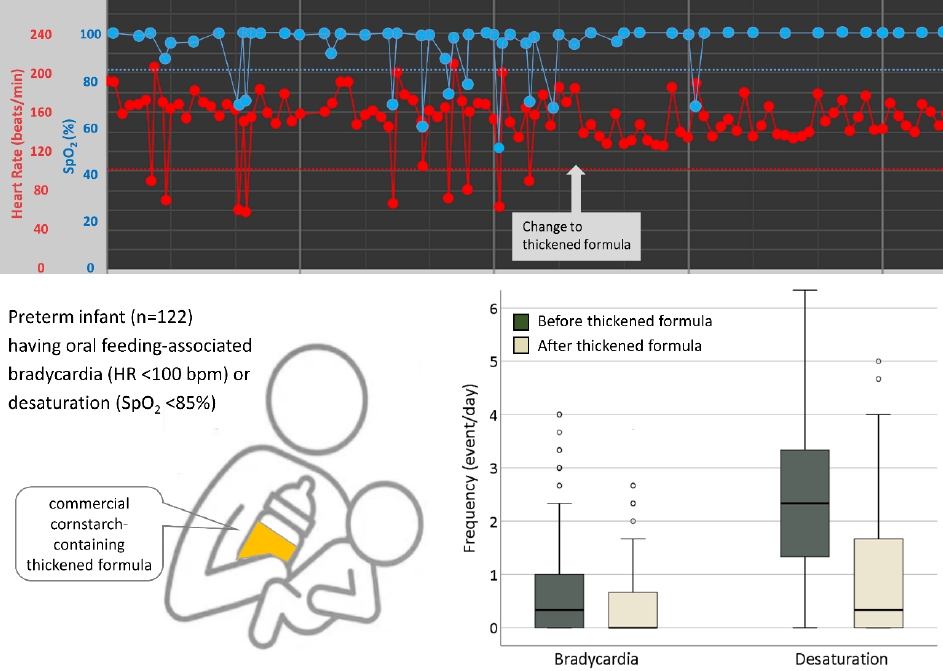
Question: Is a commercial thickened formula able to alleviate oral feeding-associated desaturation and bradycardia in preterm infants?
Finding: Thickened formula feeding significantly reduced oral feeding-associated desaturation and bradycardia in preterm infants.
Meaning: Thickened formula feeding stabilizes oxygen saturation and heart rate during oral feeding among preterm infants with feeding difficulties.
- Developmental and Behavioral Medicine
- Parenting stress and interactive engagement behaviors in children with developmental delay (22 times)
- Jung Sook Yeom, Rock Bum Kim, Jae Young Cho, Ji Sook Park, Eun Sil Park, Ji-Hyun Seo, Jae-Young Lim, Hyang-Ok Woo
- Clin Exp Pediatr. 2023;66(6):252-261. Published online May 19, 2023
-
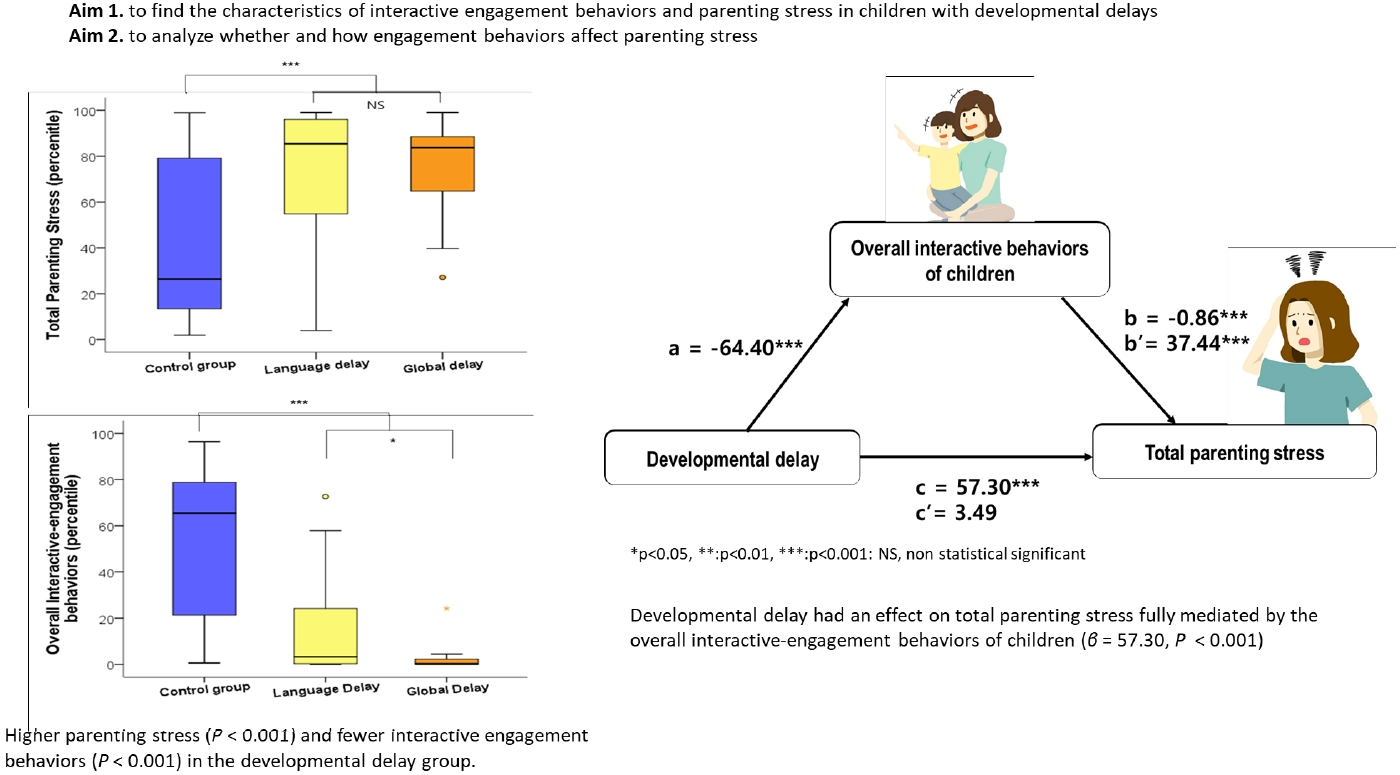
· Question: What level of parenting stress is experienced by parents of children with developmental delays (DDs) without autism spectrum disorder, and what factors contribute to it?
· Findings: Parents of children with DDs experienced high parenting stress that were significantly mediated by their children’s low interactive behaviors.
· Meaning: The interactive behaviors of children with DDs mediate parenting stress.
- Gastroenterology
- Relationship between nonalcoholic fatty liver disease and hyperandrogenemia in adolescents with polycystic ovary syndrome (22 times)
- Ozlem Kara, Hanife Aysegul Arsoy, Murat Keskin
- Clin Exp Pediatr. 2023;66(9):395-402. Published online June 14, 2023
-

Question: Is polycystic ovary syndrome (PCOS) a risk factor for nonalcoholic fatty liver disease (NAFLD) in adolescents?
Finding: The frequency of NAFLD did not increase in adolescents with PCOS. However, hyperandrogenemia was a risk factor for NAFLD.
Meaning: Adolescents with PCOS and hyperandrogenemia should be closely monitored for hepatic steatosis.
- Inferior vena cava to aorta ratio in dehydrated pediatric patients: a systematic review and meta-analysis (22 times)
- Gilbert Sterling Octavius, Michelle Imanuelly, Johan Wibowo, Nadia Khoirunnisa Heryadi, Melanie Widjaja
- Clin Exp Pediatr. 2023;66(11):477-484. Published online June 14, 2023
-
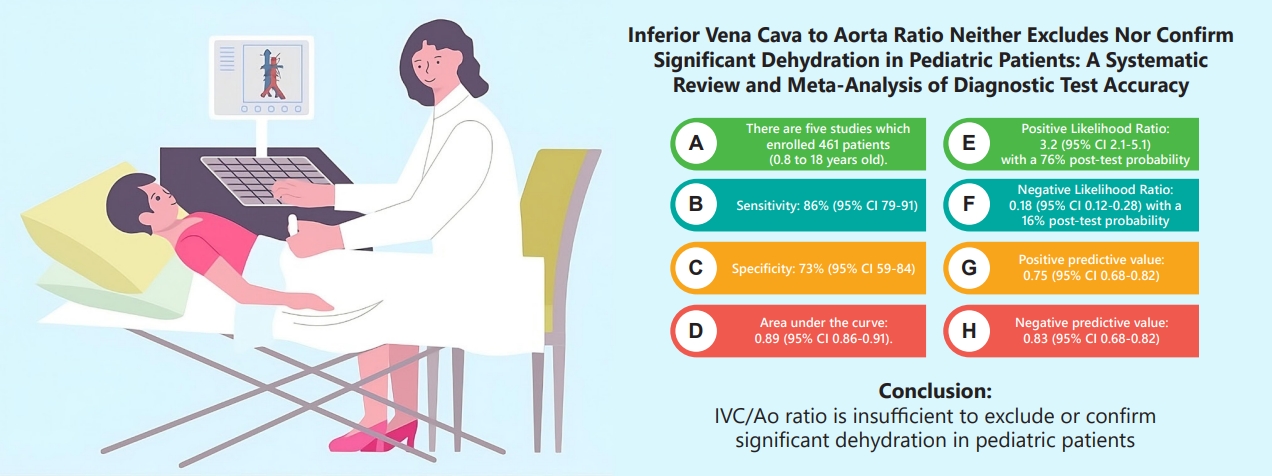
Question: The inferior vena cava to aorta (IVC/Ao) ratio measured via ultrasound has been touted as a promising noninvasive technique to assess clinically significant dehydration in pediatric patients.
Finding: Our meta-analysis found that IVC/Ao ratio had a positive likelihood ratio of 3.2 (95% confidence interval [CI], 2.1–5.1) and negative likelihood ratio of 0.18 (95% CI, 0.12–0.28).
Meaning: Hence, IVC/Ao ratio is insufficient to exclude or confirm significant dehydration in pediatric patients.
- Editorial
- Other
- Beyond the eye: a multidisciplinary perspective on managing pediatric myopia (22 times)
- Eoi Jong Seo
- Clin Exp Pediatr. 2025;68(8):566-568. Published online July 18, 2025
-
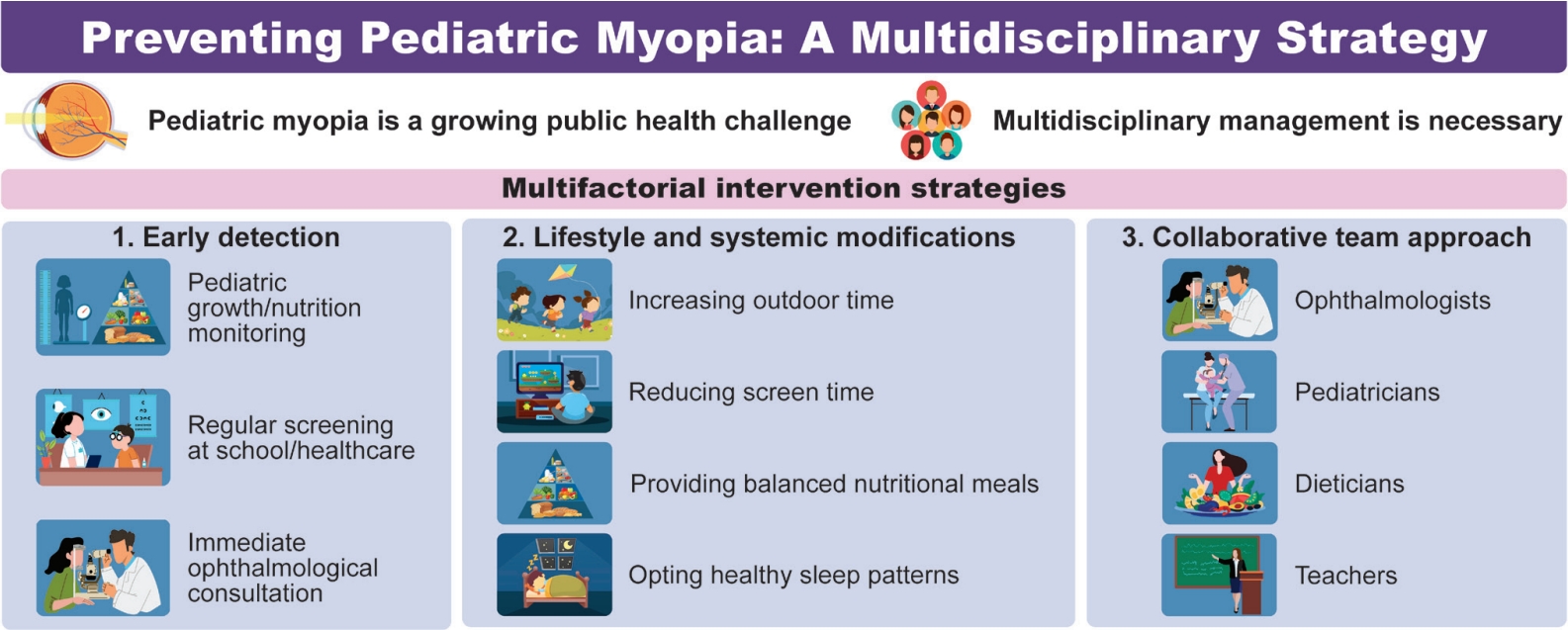
Myopia is a growing global public health concern because of its association with irreversible vision loss such as myopic traction maculopathy, rhegmatogenous retinal detachment, and glaucoma. The effective prevention of myopia in childhood requires a multidisciplinary approach that integrates ophthalmologic care with lifestyle, nutrition, and sleep interventions. Early detection through regular visual screening in schools and primary care settings and timely ophthalmology referrals are critical to preventing high myopia.
- Original Article
- Adolescence Medicine
- Relationship between inflammatory biomarkers and insulin resistance in excess-weight Latin children (21 times)
- Mariano Nicolás Aleman, María Constanza Luciardi, Emilce Romina Albornoz, María Cristina Bazán, Adela Victoria Abregú
- Clin Exp Pediatr. 2024;67(1):37-45. Published online December 21, 2023
-

Question: What is the prevalence of insulin resistance (IR) in excess-weight Latin children, and can proinflammatory biomarkers predict it?
Finding: IR prevalence was elevated and tumor necrosis factor- α, interleukin-6, monocyte chemoattractant protein- 1, soluble CD40 ligand, and high-sensitivity C-reactive protein levels were increased in excess-weight Latin children. However, none predicted IR status.
Meaning: These inflammatory biomarkers were unable to predict IR status. Therefore, further investigations are necessary.
- Letter to the Editor
- General Pediatrics
- Vitamin B12 deficiency in anemic children before versus after age 2 years: a form of hidden hunger in India (21 times)
- Sahil Goel, Ruchika Bhatnagar, Anita Kumari, Brig Prem Lochan Prasad, Lahar Sahai
- Clin Exp Pediatr. 2024;67(2):116-118. Published online January 24, 2024
-
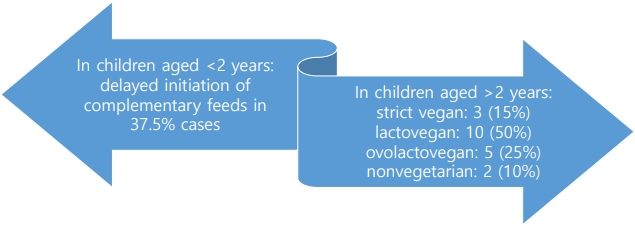
- Original Article
- Allergy
- Regional differences in diagnosis and management of cow's milk allergy (21 times)
- Fabian Hendricx, Emma Robert, Jaime A. Ramirez-Mayans, Karen Rubi Ignorosa Arellano, Erick M. Toro Monjaraz, Yvan Vandenplas
- Clin Exp Pediatr. 2024;67(11):601-607. Published online October 28, 2024
-

· Although there is broad consensus on many aspects regarding the symptoms, diagnosis, and treatment of cow's milk allergy, the impact of geographical, cultural, and socioeconomic factors remains unestablished.
· Availability and cost of formula for the management of cow's milk allergy have a major impact on the therapeutic choice.
· Region-specific guidelines for the treatment of cow's milk allergy are required.
- Editorial
- Neurology
- Understanding the usefulness of electroencephalography source localization (20 times)
- Bo Lyun Lee
- Clin Exp Pediatr. 2023;66(5):210-211. Published online April 18, 2023
-
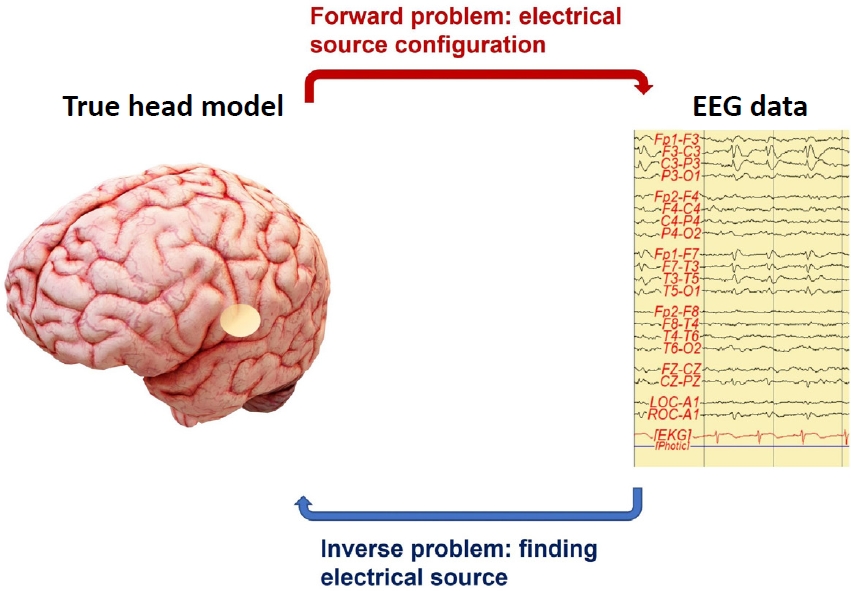
· Electroencephalography (EEG) records brain activity with high temporal resolution.
· EEG source localization, combined with other functional or structural imaging methods, provides information about brain network and connectivity in clinical neuroscience.
· EEG source localization identifies brain location from electrical current sources in several neuropsychiatric diseases such as epilepsy, attention deficit/hyperactivity disorder, and anxiety disorders.
- Neonatology (Perinatology)
- Exploring the role of laryngeal masks in neonatal resuscitation (20 times)
- Euiseok Jung
- Clin Exp Pediatr. 2024;67(5):247-248. Published online December 28, 2023
-
· Laryngeal masks (LMs) offer stable airway access and skill retention advantages, making them promising alternatives to positive-pressure ventilation in neonatal care.
· The ease of teaching LM insertion techniques to less experienced providers addresses the need for swift intervention and skill retention.
· Careful consideration of the benefits and challenges of LMs is essential in determining their effective integration into enhanced neonatal resuscitation protocols.
-

-
-
6.02024CiteScore98th percentilePowered by
-
Impact Factor3.6
-
- TOPICS
- ARTICLE CATEGORY
- Editorial Office
-
Korean Pediatric Society
#1606 Seocho World Officetel, 19 Seoun-ro, Seocho-ku, Seoul 06732, Korea
Tel: +82-2-3473-7306 Fax: +82-2-3473-7307 E-mail: office@e-cep.org
Clinical and Experimental Pediatrics is an open access journal. All articles are distributed under the terms of the Creative Commons Attribution NonCommercial License (http://creativecommons.org/licenses/by-nc/4.0/)
Copyright © 2025 by Korean Pediatric Society.











